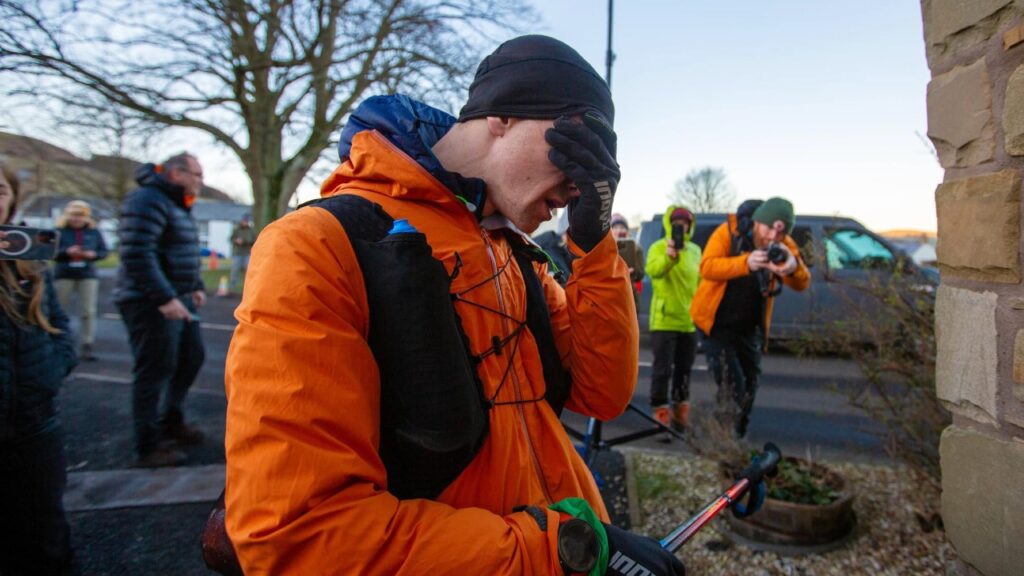Jack Scott, a prominent figure in the ultrarunning community, recently experienced a notable evolution in his career, transitioning from a disappointing DNF (Did Not Finish) at the Cocodona 250 to representing Great Britain in the upcoming World Mountain & Trail Running Championships. His journey, marked by self-reflection and strategic planning, offers insights pertinent to experienced trail and ultrarunners preparing for high-stakes events.
Scott’s performance in the 2024 Winter Spine Race is a significant highlight in his career. There, he surpassed the previous record held by Jasmin Paris, completing the grueling course in 72 hours, 55 minutes, and five seconds. This achievement demonstrated not only his physical ability but also his mental resilience, skills that are crucial in ultrarunning. Following this triumph, Scott aimed to tackle the Cocodona 250, a challenging 255-mile desert race. He committed to a comprehensive heat preparation regimen at Leeds Beckett University, underscoring the race’s importance to him.
However, during Cocodona, Scott faced an unexpected setback, withdrawing due to a hamstring injury after 91 miles. His detailed account of this difficult decision reflects the nuanced realities of ultrarunning; despite impeccable preparation, physical limitations can curtail performance. Notably, Scott emphasized the feeling of helplessness as he watched the race slip away, a sentiment many experienced runners can relate to after facing challenges during important events. His admission of surrendering to injury despite strong training promises a critical lesson: even top runners can be at the mercy of their bodies, highlighting the need for athletes to remain attuned to their physical states throughout long races.
Post-race, Scott’s self-assessment involved seeking professional advice and assimilating the experience into his broader understanding of racing. He sought physiotherapy and reflected on his DNF with the perspective of a coach, advocating for learning from failure. This approach is integral to the sport—recognizing that setbacks can provide a foundation for growth and strategy refinement. Through this lens, he devised a recovery plan focused on regaining strength and preparing for upcoming selection races for the World Championships, a testament to resilience and the value of strategic contemplation in pushing forward.
The competitive landscape offered Scott a swift opportunity for redemption with the Scafell Sky Race. The race served as the ‘short’ selection qualifier for the GB national team and featured an intensely competitive field where close margins separated the top runners. Although Scott finished fourth—just shy of automatic selection—his performance reinforced the reality that even minor adjustments in strategy or race-day execution can significantly impact results when the competition is tight.
Recognizing the competitive framework within ultrarunning, Scott adapted his ambitions and shifted focus to the 14 Peaks Ultra, a more extended selection race where he needed a top-two finish for qualification. Despite facing challenges such as an allergic reaction after Scafell and ongoing back issues, evidenced in his decision to conduct a recce of the course, Scott’s commitment to strategic preparation shone through. His racing strategy hinged on environmental acclimatization and thoughtful pacing—critical elements for navigating the unpredictable nature of mountain races.
In finishing second at the 14 Peaks, Scott secured his spot on the GB team. His achievement exemplifies the necessity of flexibility and resolve in one’s racing plans. Over just 47 days, Scott’s ability to learn from shortcomings and realign his training and race strategies often parallels the iterative processes ultrarunners must undertake in their careers. His reflections on the evolution of his running journey—from tumultuous beginnings overshadowed by personal challenges to international representation—serve as a practical reminder of the persistent engagement required in ultrarunning.
This sequence of events highlights a multiplicity of tactical considerations for experienced ultrarunners preparing for mountain races. Athletes must remain vigilant about their physical conditions, understanding the fine line between pushing through adversity and recognizing when to step back. Additionally, the competitive environment in ultrarunning necessitates the constant reevaluation of goals, strategies, and required adaptations, whether in training methodologies or racing strategies.
In consideration of race preparations, Scott’s experiences affirm that encountering obstacles can refine one’s approach, reinforcing the importance of strategic adjustments. As the landscape of ultrarunning continues to evolve—marked by ever-increasing competition and growing stakes—athletes must integrate key insights from both their successes and challenges. Ultimately, the takeaway for ultrarunners is the value of resilience in the face of setbacks and the continuous application of lessons learned to future races. Preparation extends beyond physical readiness; it encompasses mental fortitude and the ability to pivot wisely when circumstances change unexpectedly. By fostering this adaptability, runners can navigate the challenges of ultramarathons and emerge with enriched perspectives and enhanced performance.
